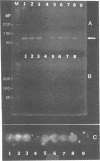Abstract
A rapid polymerase chain reaction (PCR) method was developed for detection of Listeria monocytogenes in foods. This method used a pair of primers based on a unique region in the 16S rRNA sequence of L. monocytogenes, which were previously reported by us to yield a specific nucleic acid probe. Our method included use of a shorter denaturing time, a shorter annealing time, a rapid transition, and an increase in the number of cycles, resulting in good sensitivity. Just 3 h for PCR plus 1 h for electrophoresis was required. Additional time for DNA isolation and DNA hybridization was not needed. This method detected as few as 2 to 20 CFU of L. monocytogenes in pure cultures and as few as 4 to 40 CFU of L. monocytogenes in inoculated (10(8) CFU), diluted food samples. Seven of eight foods, including four poultry products, gave positive results. Only one food sample, soft cheese, gave interference. An internal probe hybridization test was used to confirm that the PCR products were from L. monocytogenes. A specificity test indicated that this PCR method was positive for all 13 strains of L. monocytogenes tested but negative for the other 6 species of Listeria, including 6 strains of L. innocua, and negative for 17 other gram-positive and gram-negative bacteria tested.
Full text
PDF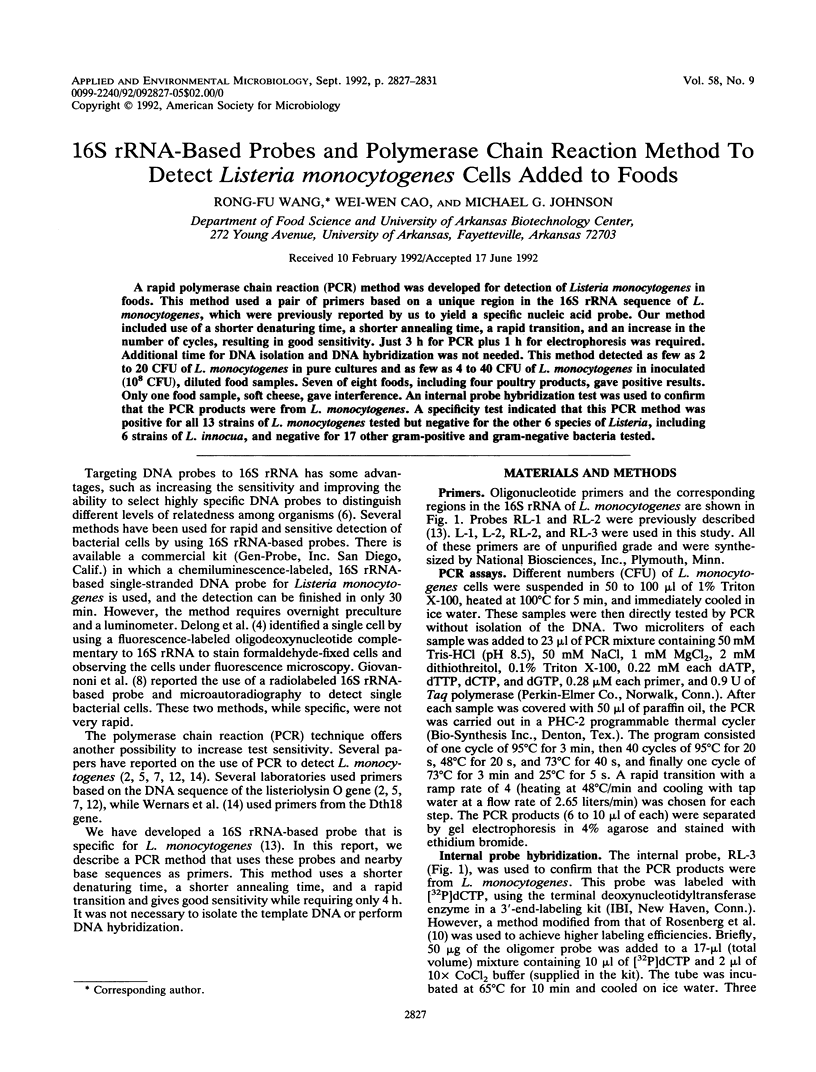
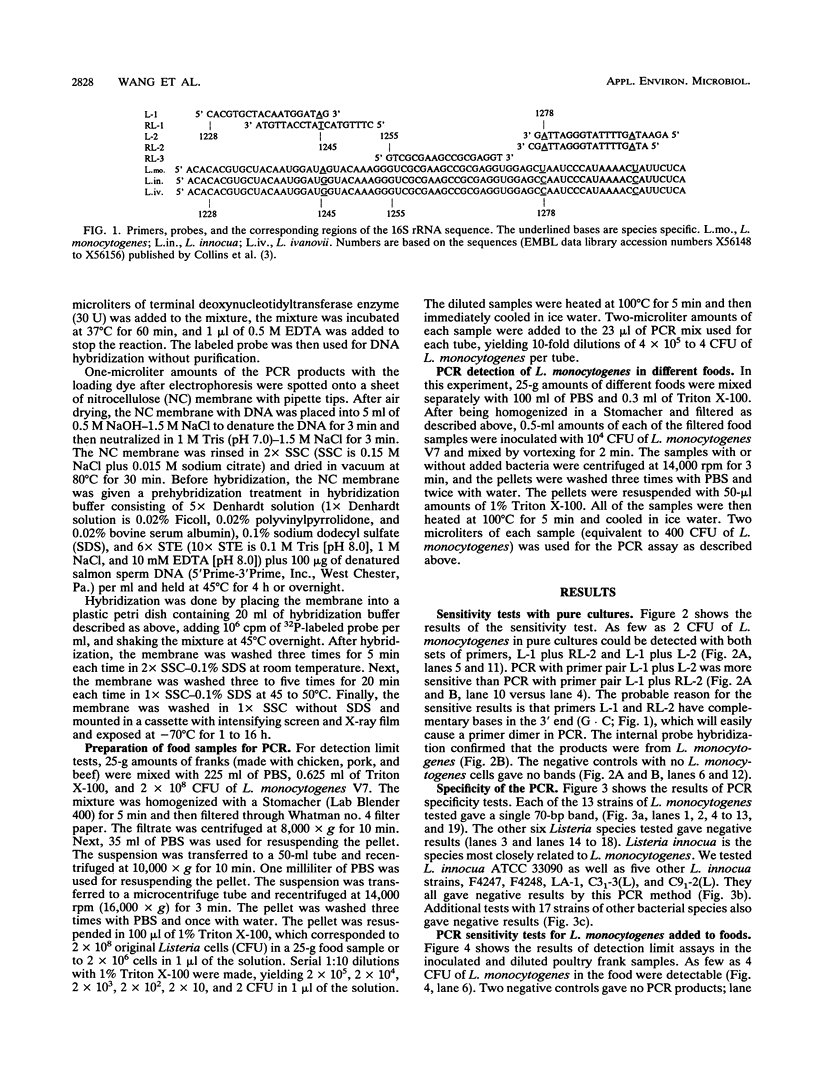
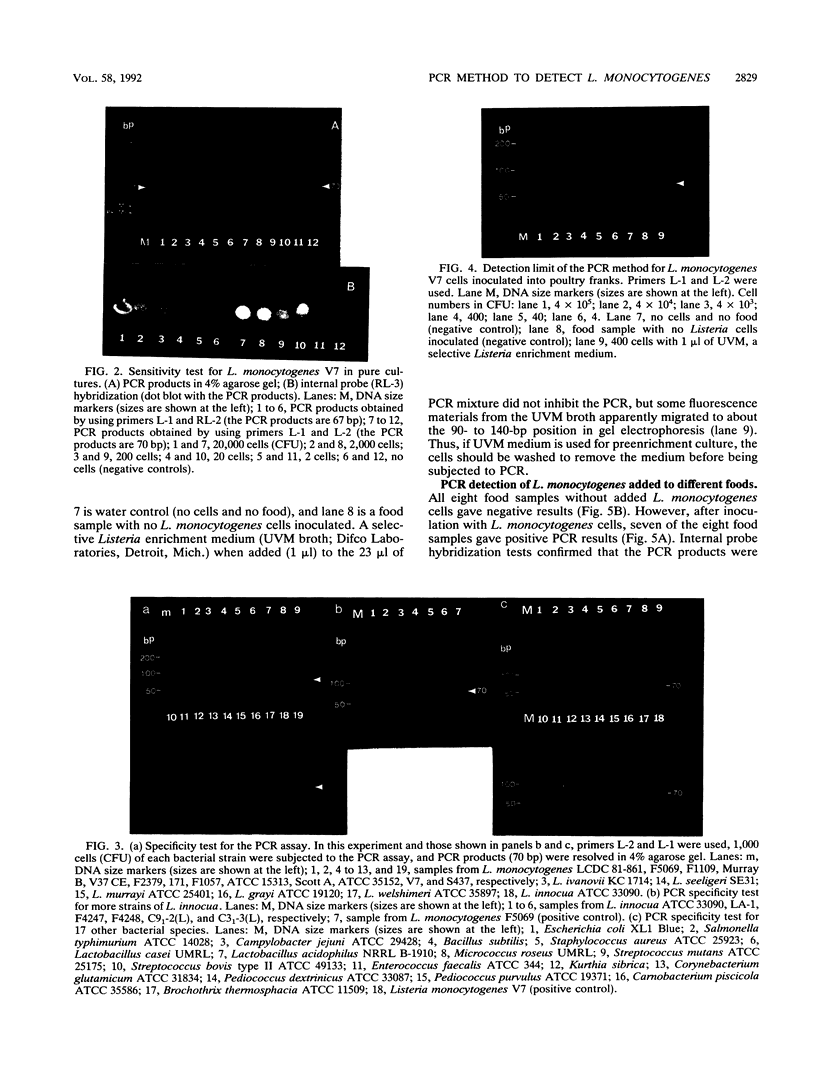
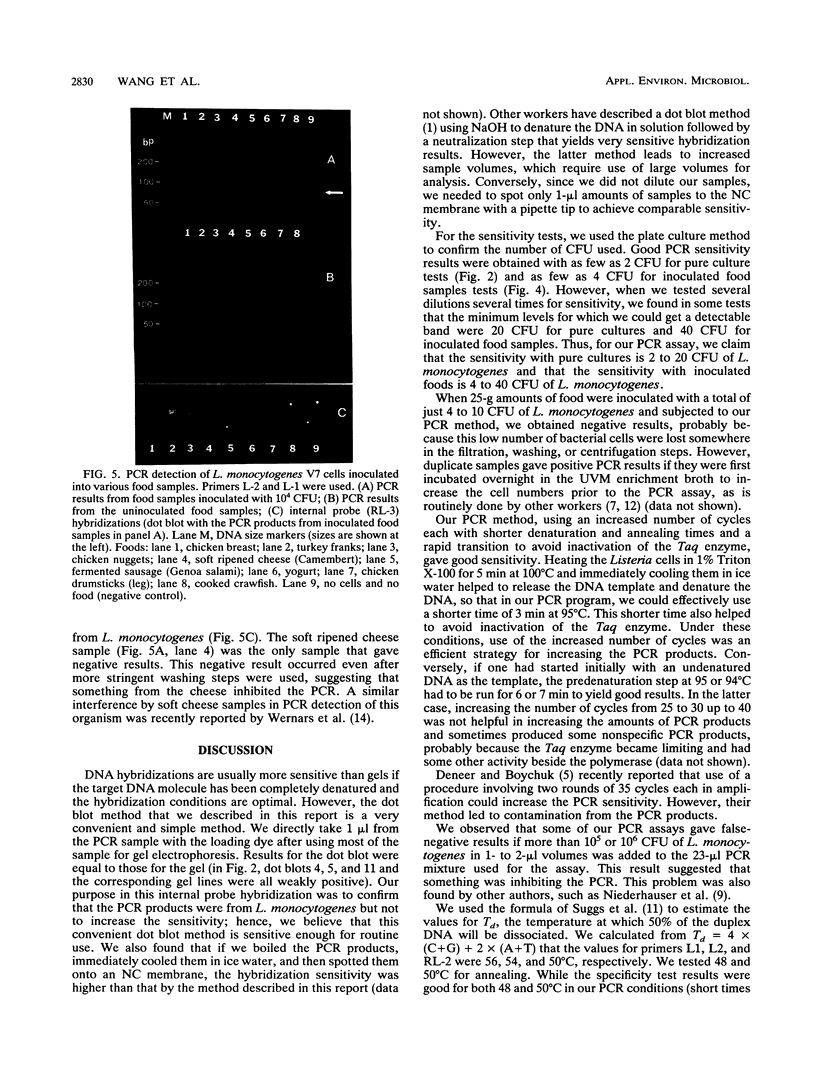
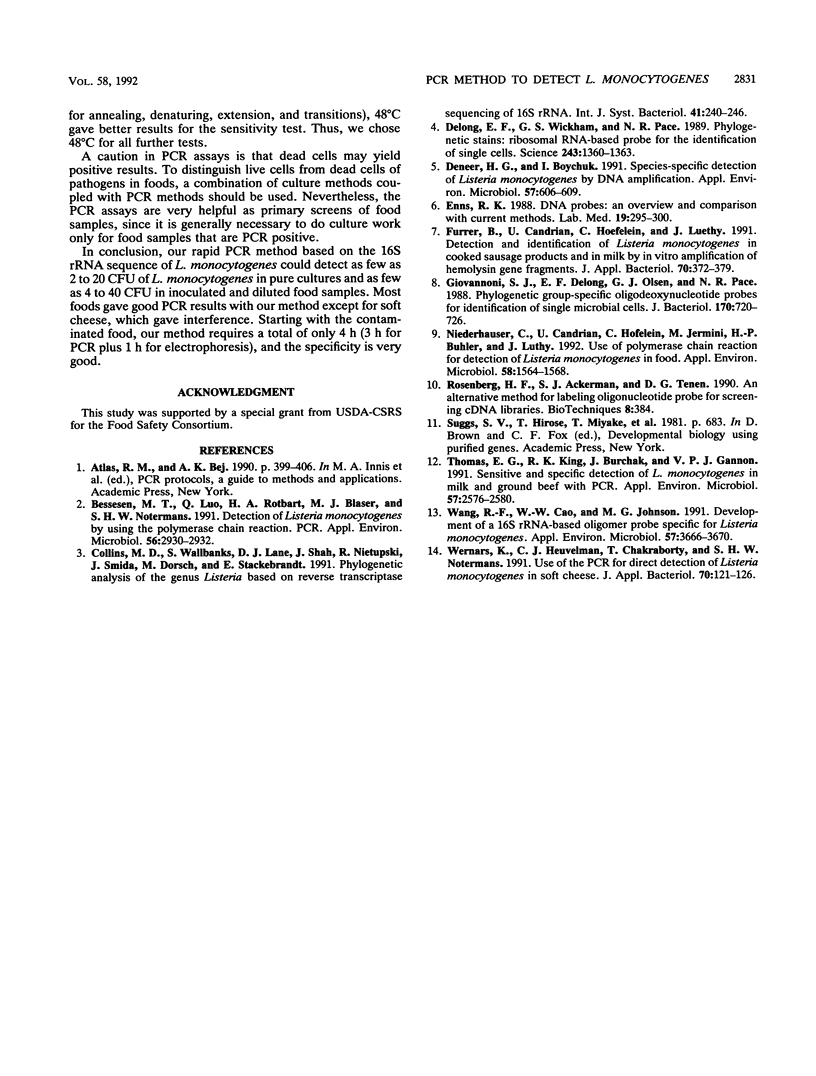
Images in this article
Selected References
These references are in PubMed. This may not be the complete list of references from this article.
- Bessesen M. T., Luo Q. A., Rotbart H. A., Blaser M. J., Ellison R. T., 3rd Detection of Listeria monocytogenes by using the polymerase chain reaction. Appl Environ Microbiol. 1990 Sep;56(9):2930–2932. doi: 10.1128/aem.56.9.2930-2932.1990. [DOI] [PMC free article] [PubMed] [Google Scholar]
- Collins M. D., Wallbanks S., Lane D. J., Shah J., Nietupski R., Smida J., Dorsch M., Stackebrandt E. Phylogenetic analysis of the genus Listeria based on reverse transcriptase sequencing of 16S rRNA. Int J Syst Bacteriol. 1991 Apr;41(2):240–246. doi: 10.1099/00207713-41-2-240. [DOI] [PubMed] [Google Scholar]
- DeLong E. F., Wickham G. S., Pace N. R. Phylogenetic stains: ribosomal RNA-based probes for the identification of single cells. Science. 1989 Mar 10;243(4896):1360–1363. doi: 10.1126/science.2466341. [DOI] [PubMed] [Google Scholar]
- Deneer H. G., Boychuk I. Species-specific detection of Listeria monocytogenes by DNA amplification. Appl Environ Microbiol. 1991 Feb;57(2):606–609. doi: 10.1128/aem.57.2.606-609.1991. [DOI] [PMC free article] [PubMed] [Google Scholar]
- Furrer B., Candrian U., Hoefelein C., Luethy J. Detection and identification of Listeria monocytogenes in cooked sausage products and in milk by in vitro amplification of haemolysin gene fragments. J Appl Bacteriol. 1991 May;70(5):372–379. doi: 10.1111/j.1365-2672.1991.tb02951.x. [DOI] [PubMed] [Google Scholar]
- Giovannoni S. J., DeLong E. F., Olsen G. J., Pace N. R. Phylogenetic group-specific oligodeoxynucleotide probes for identification of single microbial cells. J Bacteriol. 1988 Feb;170(2):720–726. doi: 10.1128/jb.170.2.720-726.1988. [DOI] [PMC free article] [PubMed] [Google Scholar]
- Niederhauser C., Candrian U., Höfelein C., Jermini M., Bühler H. P., Lüthy J. Use of polymerase chain reaction for detection of Listeria monocytogenes in food. Appl Environ Microbiol. 1992 May;58(5):1564–1568. doi: 10.1128/aem.58.5.1564-1568.1992. [DOI] [PMC free article] [PubMed] [Google Scholar]
- Rosenberg H. F., Ackerman S. J., Tenen D. G. An alternative method for labeling oligonucleotide probes for screening cDNA libraries. Biotechniques. 1990 Apr;8(4):384–384. [PubMed] [Google Scholar]
- Thomas E. J., King R. K., Burchak J., Gannon V. P. Sensitive and specific detection of Listeria monocytogenes in milk and ground beef with the polymerase chain reaction. Appl Environ Microbiol. 1991 Sep;57(9):2576–2580. doi: 10.1128/aem.57.9.2576-2580.1991. [DOI] [PMC free article] [PubMed] [Google Scholar]
- Wang R. F., Cao W. W., Johnson M. G. Development of a 16S rRNA-based oligomer probe specific for Listeria monocytogenes. Appl Environ Microbiol. 1991 Dec;57(12):3666–3670. doi: 10.1128/aem.57.12.3666-3670.1991. [DOI] [PMC free article] [PubMed] [Google Scholar]
- Wernars K., Heuvelman C. J., Chakraborty T., Notermans S. H. Use of the polymerase chain reaction for direct detection of Listeria monocytogenes in soft cheese. J Appl Bacteriol. 1991 Feb;70(2):121–126. doi: 10.1111/j.1365-2672.1991.tb04437.x. [DOI] [PubMed] [Google Scholar]






